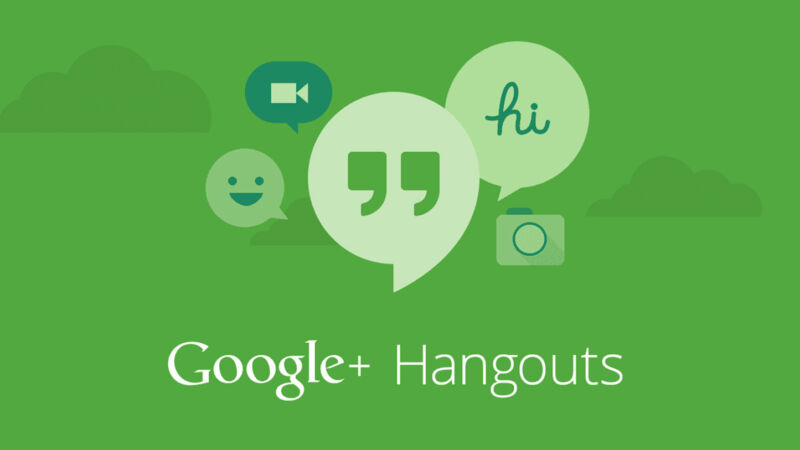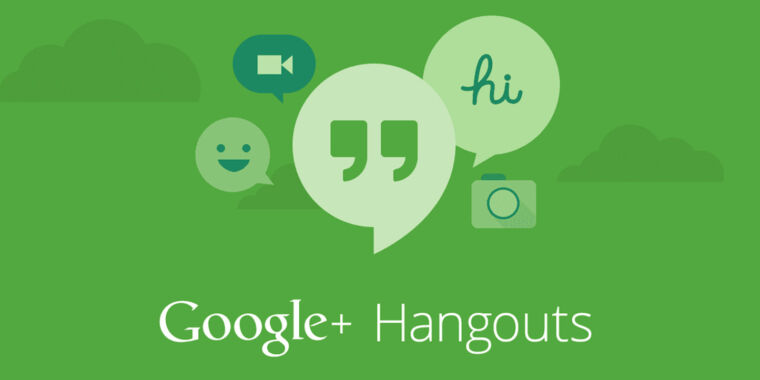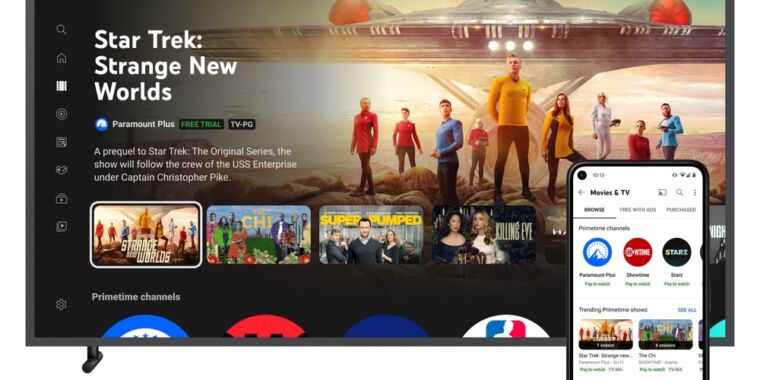
Today, November 1, 2022, Google Hangouts is scheduled for death. The phone app has been individually booting people off the service since July, but the last vestiges of Hangouts, the web app, will be shut down today. Hangouts was—for a brief period—Google’s best, most ambitious, most popular messaging effort, but 5 billion downloads later, Google is moving on. Hangout’s next of kin, Google Chat, should have all of your messages and contacts automatically imported by now, but the new service is a faint shadow of the original plan for Hangouts.
The closing of Hangouts is the latest chapter in the mess that is Google’s messaging history. Google Talk launched 17 years ago, and Google still doesn’t have a competitive message platform. Part of the reason we’re on Google’s 10 millionth messaging app is that there is a solid, stable home for messaging inside Google. The 2022 messaging lineup is a great example. You’ve got the Google Workspace team making Google Chat—that’s Google’s business team making a Slack competitor—and then there’s Google Messages—a carrier-centric sort-of-competitor to Apple’s iMessage—which seemingly grew out of the Android team. Is the team that makes Android more or less important than the team that makes Gmail and the rest of the Google apps? Both have their understandable reasons for chasing messaging, but splitting the Google user base across two incompatible products makes it tough for either project to gain any traction. Besides those two big projects, there’s also still Google Voice, and a bunch of siloed messaging services in apps like Google Photos and Google Pay.
Once upon a time, Google tried to fix this. Messaging was supposed to have a real home at Google, and that home was supposed to be (cue dramatic thunderclap) Google+. Back in 2011, Google’s then-CEO Larry Page decided social was the future and spun up the Google+ project across the company. The head of G+ got the title “Senior Vice President” making him one of the eight-ish people that reported directly to Page, enshrining Google+ as one of the main pillars of Google. This division was supposed to take full ownership of messaging, and it launched its messaging project—Google+ Hangouts—two years later.
-
The day-one Android app.
-
Blob emojis and an ongoing video call.
-
Would you believe Android used to have tablet apps?
Google -
Just like Google Talk, Hangouts also worked in Gmail.
-
Who could forget the butt-ugly, puke-green version of Hangouts that launched in 2014?
-
By the end of 2014, you could quickly switch between Hangouts, SMS, and Google Voice just by tapping the button to the left of the input field.
-
The current (and, I guess, final) design for Android.
Google
Hangouts, which was codenamed “Project Babel,” was charged with the task of—get this—unifying Google messaging portfolio. Google had four messaging apps at the time, Google+ Messenger, Google Talk, Android’s SMS app, and Google Voice. Hangouts launched in 2013, and by the end of the year integrated SMS messages. By 2014, the app was fully operational, and featured Hangouts Messages, SMS, and Google Voice all in one app, all available from your phone or anywhere on the Internet. With the release of Android 4.4 in 2013, there was no standalone Android SMS app. Hangouts was the only default SMS option.
Google had built its iMessage clone, and it was an incredible service. All your communication was available from a single messaging app in one, easy-to-use interface. Google also had tangible advantages over iMessage, thanks to wide cross-platform compatibility. Hangouts was on Android, iOS, the web, and inside Gmail. That meant the service natively worked on phones, watches, cars, tablets, web browsers, and even Google Glass at one point. Google would probably have a decent footing in messaging today if it just kept updating and investing in Hangouts.
Hangout’s home was already falling apart in 2014, though. Amid complaints that Google+ was a “ghost town,” the knives came out for the service. Google+ SVP and driving force behind the project, Vic Gundotra, left Google, and that same day reports came out that Google+ resources would be drastically cut, and the forced, Google-wide integration of G+ would end. Hangouts was stuck in a dying division, and while some projects like Google+ Photos managed to spin out into a stable landing spot, Hangouts did not, and by 2015 you would regularly see complaints from customers that the project was underfunded.
The other “problem” with Hangouts is that it was a strike against cell carriers. Combining SMS and an over-the-top messaging service into one app was something the carriers didn’t like. They wanted something focused on SMS and only SMS, so users wouldn’t dare be tempted to not use a carrier product. Google caved and introduced the standalone Google Messages in the next Android release. With Google’s lack of organization and fortitude, Hangouts’ reign as Google’s top, all-in-one messaging service only lasted about a year. Hangouts has kept on trucking as the abandoned, zombie product that was still better than the plethora of new messaging services Google would release afterward, and today, it’s finally being put down.








